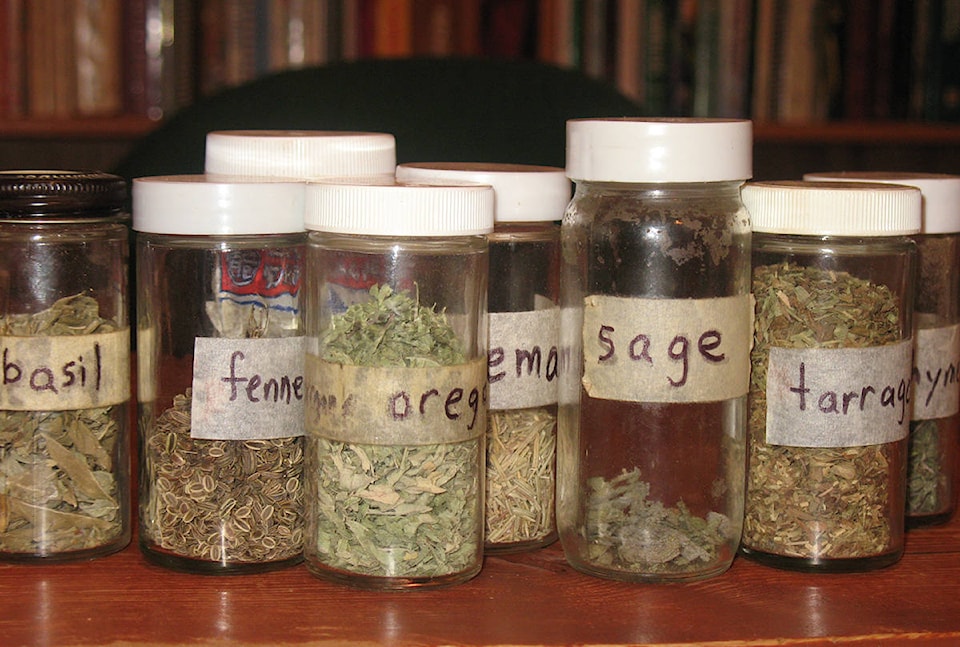By Mary Lowther
Boiled tomatoes are pretty bland, but oregano and basil transform them into spaghetti sauce. Cucumbers are hardly worth pickling without dill, and turkey stuffing is just old bread until we add sage, rosemary and thyme. Art historians enthuse about the paintings of ancient cave dwellers, but the first use of art was probably when some Neolithic Escoffier decided to add a little herb to the dinner.
Why did our ancestors decide to add a little of this or that to their meals? One theory is that as humans selected plants for their flavour, choosing the least bitter plants to cultivate, they inadvertently bred out nutrition along with bitterness. Many of the most beneficial micronutrients have a bitter, sour or astringent taste.
Discerning palates, however, clamoured for more flavour. Possibly our taste buds require the zing that the bitterness of herbs and spices add to our relatively bland vegetables because they recognize the need for added nutrition. Many herbs contain antioxidants, vitamins and minerals, adding more to your food than mere flavour. Since the initial selection process also removed harmful toxins from the native fruits and vegetables, we are eating less harmful foods and giving them both flavour and nutrition with herbs that are safe to consume.
Here is a sample of what just a few commonly used herbs can do. Oregano, loaded with antioxidants, helps prevent arthritis, asthma, body odour, emphysema, glaucoma, high blood pressure and HIV infection. Basil can be rubbed on the skin as an insect repellent. It contains many anti-viral compounds that help eradicate warts: place crushed leaves on the wart and cover with a bandage, change it every day and remove after one week. Basil also helps reduce high blood pressure. Dill has been shown to relieve gas and heartburn, and chewing some sweetens the breath. Sage has at least six anti-inflammatory compounds and is high in antioxidants. Rosemary contains as least twelve antioxidants, helps preserve food and prevents wrinkles! I should be eating tons of this stuff!
These herbs grow so easily that, with the exception of basil, they can take over the garden, so I keep most of mine in a separate bed. I’ve found that small-leafed basil grows dependably and I plant it with my tomatoes. Oregano, rosemary and sage are perennials that grow every year and should be dug up once in a while to remove some of each plant so they don’t overwhelm everything else. I sprinkle compost on them twice a year, spray some compost tea on them about once a month and harvest them just before they flower. If you don’t have a garden you can grow herbs in a sunny window or out on the porch, but remember to fertilize them once in a while.
You can save them for later use by putting them in a labeled paper bag and letting them dry, or bundle a bunch together, tie the stems and hang them upside down in a dry area out of the sun. If they aren’t dry after a week, take them down and spread them on newspapers in a dry shady area. They can be stored in paper or plastic bags, or jars in a cool, dark place since light, heat and oxygen destroy their potency. To minimize oxygen around the herbs, move the herbs to smaller containers as you use them.
Once you discover how easy it is to grow herbs, you won’t be running to the store because you ran out of oregano, in fact, you’ll have so much that you’ll be sharing it, making herb garlands and wreaths for the door. It will also give your friends and neighbours something to put on all that zucchini you gave them last week.
Please contact mary_lowther@yahoo.ca with questions and suggestions since I need all the help I can get.
